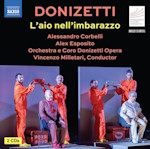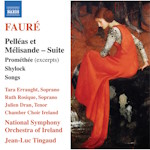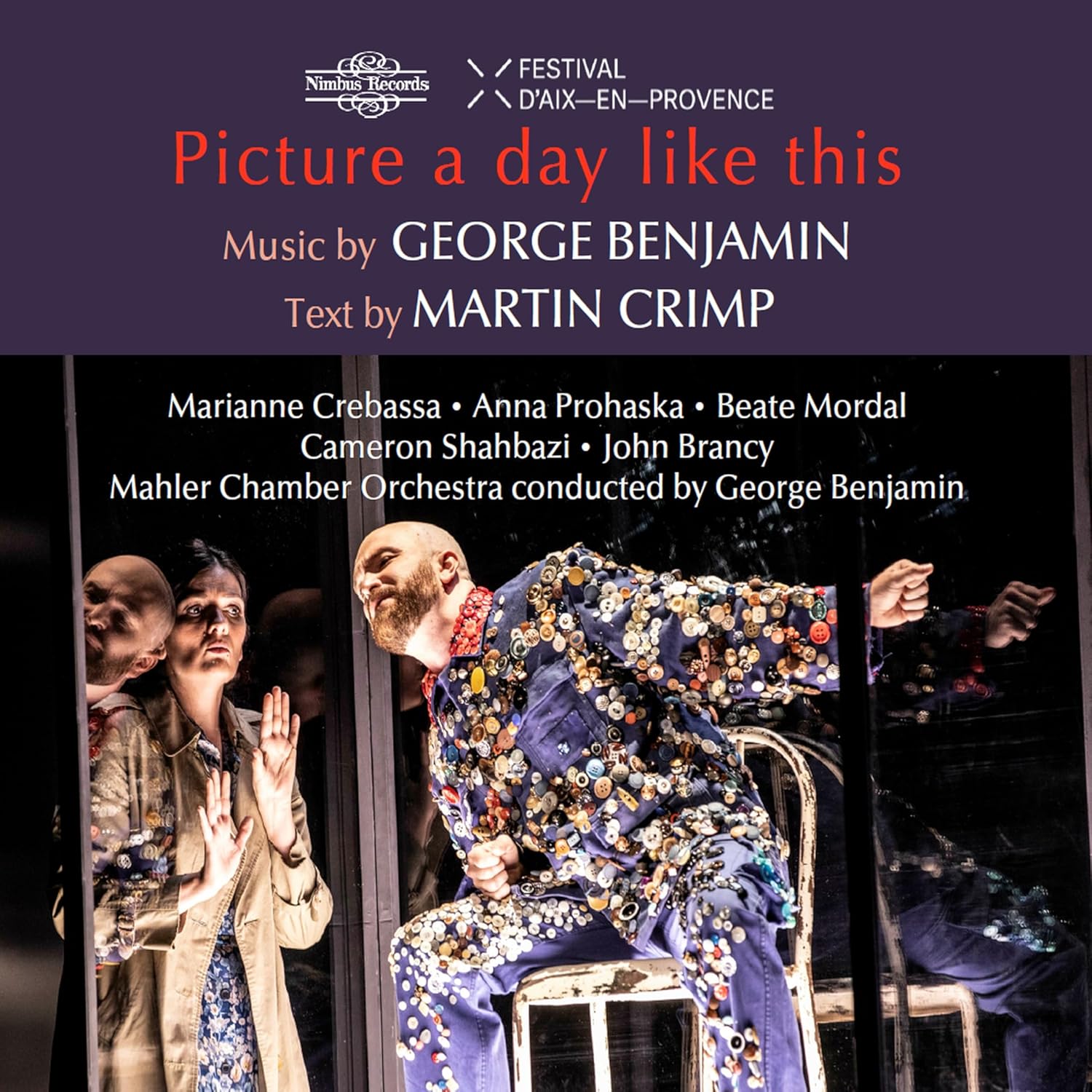
Ravel Fragments
Bertrand Chamayou (piano)
rec. 2024, Miraval Studios, Domaine de Miraval, Correns, France
Reviewed from a download
Erato 2173260123 [61]
Bertrand Chamayou recorded the complete solo works of Ravel for Erato in 2015. That set also included a couple of extras in the form of a supplement by Casella and a transcription of Kaddisch by Ziloti. There was no Daphnis or La Valse, though. In the notes to that marvellous set, Chamayou says he thought long and hard about including the two transcribed works but in the end left them out. La Valse in the version for one piano has simplified passages which the performer has to grapple with in terms of how best to express them. There are also some pages written out in three parts; Ravel writes out details that should be included but doesn’t say how to play them. It’s as if he’s saying “here’s the material, go figure”. In Daphnis there is no issue with the score, but some feel the writing is too dense and doesn’t carry well into two staves; the essence of that glorious ballet is rather lost in congestion.
Here in his new record, Chamayou presents his readings of the three fragments from Daphnis et Chloé that Ravel himself transcribed. There are 17 minutes of music. He also includes the problematic La Valse transcription. This is a thirteen-minute work in Chamayou’s performance. In between, we have Bertrand Chamayou’s own transcriptions of two songs and the Pièce en forme de habanera. What makes this record so fascinating and essential, though, is the juxtaposition of these Ravel pieces with eight tributes to the composer by eight other musicians, famous and not so well known. These vignettes are so well chosen and even more impressively delivered by the superb pianist. He has also offered interesting notes and descriptions of the music and his links to it. It is an impressively curated project and a worthy testimonial to Ravel on the 150th anniversary of his birth.
Chamayou can trace his pianistic lineage back to Ravel very directly. He studied for years with Jean-François Heisser, who was himself a student of the legendary Vlado Perlemuter. Perlemuter’s connection to Ravel is well known. Chamayou grew up with Perlemuter’s Ravel records and saw him live playing Ravel. As a Frenchman of the South, like Ravel, he is drawn to the man and his music; those of us who have had his complete set of the solo piano music on our shelves for the last ten years would know this already, however.
The new record begins perfectly with Trois beaux oiseaux du paradis. Chamayou’s playing is absolutely beautiful, the hint of melancholy and regret sublime. The first instalment of Daphnis follows. His touch is sensitive and his sense of rhythm alive. The final couple of short pieces in what I am terming as the “opening” is a short sketch of Spain from Nin and the serenade-like Chanson de la mariée from Ravel’s Greek folksongs set.
The next section is fronted by the amazing De la nuit by the Italian composer Salvatore Sciarrino. This is a fearsomely difficult and incredibly fast-moving, scurrying, hallucinatory soundscape which uses snippets from Ravel’s Gaspard da la nuit. The ripples and quicksilver cascades are vividly realised by Chamayou and captured in brilliant sound by the recording team led by Damien Quintard of Warner/Erato. The Sciarrino is followed by what are termed Fragments symphoniques of the Daphnis ballet. This is the most substantial single piece in the three excepts and is itself divided into nocturne, interlude and danse guerrière. Any reservations one may have of this fitting into the canon of Ravel’s solo music for piano must surely be extinguished after hearing this account of the music. The clarity of Chamayou’s passage work and his staccato serve this music admirably. The resonance and rich sound of his Steinway D model are well caught.
I think the next four pieces work well together. Beginning with a short but richly evocative prelude written in hommage à Maurice Ravel by Tansman, we move through the habanera and the unsettling spooky piece by Frédéric Durieux to La Valse. This is the perplexing, sometimes skeletal version Ravel himself made. Chamayou’s version is full of colour and his shaping and pacing of the waltz is unrushed and nuanced. Again, the sound of the piano is magnificent across the whole range and in all dynamics. Chamayou certainly makes a convincing case for the work, finding a path through the myriad of problems including the glissandi and the different voices on the page.
The final of my personally recommended four sections to this recital takes us from the charming Menuet spectral by Ravel’s friend Ricardo Viñes and the small tone picture by Montsalvatge, through Signets, a piece by French/American Betsy Jolas written in the mid-80s to the gorgeous homage Honegger wrote to Ravel and included in his 3 Pièces of 1919. Betsy Jolas turns 100 next year. We close with the Scène de Daphnis et Chloé. The beauty Chamayou can draw here from his gorgeous instrument is intoxicating. You will not miss the orchestra, I promise you.
This record may very well be included when I draw up my list next November for Records of the Year. I have suggested a four-part listening guide to the recital but in truth, the pieces are so well chosen, one can very well play through the whole thing in one sitting and just wallow in the sheer seduction of it all. Bertrand Chamayou has been at the Erato stable for many years now. Unfortunately, MWI doesn’t seem to have covered his magnificent records of Satie, Cage and Messiaen but you can take my word for it, they would be sound investments for any pianophile.
On the day itself of the anniversary of Ravel’s birth, 7th March 2025 (just a week ago, as I sit writing this review), Bertrand Chamayou gave a mammoth recital of the complete oeuvre of Ravel’s piano works at the Philharmonie de Paris. I would have given a lot to have been there. Fortunately, their website has the complete concert available to watch for free until September. I would highly recommend it. Next up, surely Erato will record him in the concertos.
Philip Harrison
Buying this recording via a link below generates revenue for MWI, which helps the site remain free


Contents
Maurice Ravel (1875-1936)
3 Chansons, M. 69: No. 2, Trois beaux oiseaux du paradis (transcr. Chamayou for Piano)
Daphnis et Chloé, M. 57d: Danse légère et gracieuse de Daphnis
Joaquín Nin (1879-1949)
5 Comentários: No. 1, Mensaje a Ravel
Maurice Ravel
5 Mélodies populaires grecques: No. 1, Chanson de la mariée, M. A 9 (transcr. Chamayou for Piano)
Salvatore Sciarrino (b. 1947)
De la nuit
Maurice Ravel
Fragments symphoniques de Daphnis et Chloé, M. 57c
Alexandre Tansman (1897-1986)
4 Préludes: No. 2, Hommage à Maurice Ravel
Maurice Ravel
Pièce en forme de habanera, M. 51 (transcr. Chamayou for Piano)
Frédéric Durieux (b. 1959)
Pour tous ceux qui tombent
Maurice Ravel
La valse, M. 72b
Ricardo Viñes (1875-1943)
4 Hommages pour le piano: No. 1, Menuet spectral (À la mémoire de Maurice Ravel)
Xavier Montsalvatge (1912-2002)
Elegia a Maurice Ravel
Betsy Jolas (b. 1926)
Signets, hommage à Maurice Ravel
Arthur Honegger (1892-1955)
3 Pièces pour piano: No. 2, Hommage à Ravel
Maurice Ravel
Suite pour piano de Daphnis et Chloé, M. 57c: Scène de Daphnis et Chloé

















